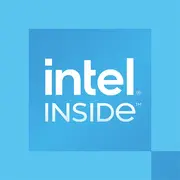Intel Processor N95

Intel Processor N95: Compact Power for Everyday Tasks
March 2025
Introduction
Low-power processors are becoming key players in the budget laptop and ultraportable device market. The Intel Processor N95, released in 2023, continues to be a popular choice for users who prioritize battery life and quiet operation without compromising on basic performance. In this article, we will explore what makes this model noteworthy, who it is suitable for, and how it stacks up against competitors in 2025.
1. Architecture and Process Technology
Alder Lake-N: Efficiency over Multitasking
The N95 belongs to the Alder Lake-N family, aimed at devices with passive cooling. The chip is manufactured using Intel's 10nm process technology (Intel 7) and employs a hybrid architecture, albeit without high-performance P-cores. Instead, it features 4 energy-efficient Gracemont (E-cores) operating at the following frequencies:
- Base: 1.7 GHz,
- Turbo Boost Maximum: 3.4 GHz.
The threads are not hyper-threaded (4 cores / 4 threads), which limits multitasking but helps reduce power consumption. The L3 cache is 6 MB, which is sufficient for lightweight applications.
Integrated Graphics Intel UHD Graphics (Xe-LP)
The built-in GPU is based on the Xe-LP architecture with 16 execution units (EUs). It supports:
- Resolutions up to 4K@60Hz,
- Hardware decoding for VP9, H.265, and AV1 video formats,
- Lightweight gaming on low settings.
2. Power Consumption and TDP: Quiet and Cool
TDP 6W: Fanless Laptop
The N95 is designed for devices with passive cooling. Under maximum load, it can consume up to 15W but rarely exceeds 6–8W in typical scenarios. This enables the creation of ultra-thin laptops (for example, Chuwi Minibook X or Acer TravelMate B3) less than 15mm thick without fans.
Heat Dissipation
Even under peak loads, the chip's temperature does not exceed 75–80°C, which eliminates throttling during short tasks (such as launching a browser or office applications).
3. Performance: Speed for Basic Tasks
Office Work and Web Surfing
The N95 can handle:
- Simultaneous work in 10–15 Chrome tabs + Microsoft Office,
- Video calls on Zoom (with background effects),
- Streaming 4K video.
PCMark 10 tests score around 3200 points—a level sufficient for everyday use but not for professional tasks.
Multimedia
Hardware decoding of AV1 and H.265 makes the N95 ideal for media players and mini-PCs. For instance, rendering a 10-minute 1080p video in DaVinci Resolve will take around 25 minutes—slower than a Core i3, but acceptable for infrequent tasks.
Gaming
The integrated graphics can handle:
- CS:GO at 720p (low settings) — 35–40 FPS,
- Genshin Impact (720p, minimum settings) — 25–30 FPS,
- Minecraft (1080p) — 50–60 FPS.
Turbo Mode: Brief Boost
Under load, the processor can instantly boost to 3.4 GHz, but maintains this frequency for no more than 10–15 seconds. This is useful for "bursts," such as loading heavy websites or PDF files.
4. Use Cases: Who is N95 Suitable For?
- Students — for note-taking, online courses, and light projects.
- Office Workers — dealing with documents, emails, and video conferences.
- Media Center Users — connecting to TV for streaming.
- As a Secondary Device — a compact laptop for travel.
Not Suitable For: Gamers, designers, engineers working with CAD software.
5. Battery Life: Up to 12 Hours in Reading Mode
With a battery capacity of 40–50 Wh (typical for devices with N95), runtime will average:
- Web Surfing: 8–10 hours,
- Video (local): up to 12 hours,
- Maximum Load: 3–4 hours.
Power Saving Technologies:
- Intel Speed Shift — instant switching between C-states.
- Dynamic Tuning — frequency adaptation based on current tasks.
6. Comparison with Competitors
AMD Athlon Silver 7120U (Zen 2, 4 cores)
- Pros: Better multi-threading (~15% in Cinebench R23).
- Cons: Higher TDP (8–10W), requires active cooling.
Apple M1 (for macOS devices)
- Pros: 2–3 times higher performance, software optimization.
- Cons: Price (laptops starting at $800), limited compatibility with Windows.
Intel Pentium 8505 (Alder Lake-U, 5 cores)
- Pros: Availability of a P-core for single-thread tasks.
- Cons: TDP of 15W, laptops starting from $500.
Conclusion: The N95 wins on price and energy efficiency but falls short in speed.
7. Pros and Cons
Strengths:
- Silent operation (passive cooling),
- Affordable laptop prices ($300–$450),
- Support for modern codecs (AV1).
Weaknesses:
- Struggles with heavy software (Photoshop, Blender),
- Only 4 threads limit multitasking,
- No support for Thunderbolt 4.
8. Recommendations for Choosing a Laptop
Types of Devices:
- Ultrabooks — for example, Lenovo IdeaPad Slim 3 (from $330).
- 2-in-1s — Chuwi Minibook X (from $400).
- Mini-PCs — Beelink U59 Pro for TV connection ($220).
What to Look For:
1. RAM: Minimum 8GB LPDDR5.
2. Storage: 256GB SSD (preferably NVMe).
3. Screen: Full HD IPS — less eye strain.
4. Ports: USB-C with Power Delivery for convenient charging.
9. Final Conclusion
The Intel Processor N95 is an ideal choice for those seeking an affordable, quiet, and long-lasting laptop for basic tasks. It may lag behind more powerful CPUs in performance, but it compensates with price ($300–$450) and longevity without recharging.
Who It Is Suitable For:
- Students,
- Office workers,
- Users needing a compact gadget for travel.
Key Benefits:
- Ability to work all day without needing an outlet,
- Quiet operation even under load,
- Accessibility in an era of rising electronics prices.
As of 2025, the N95 remains relevant in the budget device niche, demonstrating that even modest specifications can provide comfort in everyday scenarios.
Basic
CPU Specifications
Memory Specifications
GPU Specifications
Miscellaneous
Benchmarks
Compared to Other CPU
Share in social media
Or Link To Us
<a href="https://cputronic.com/cpu/intel-processor-n95" target="_blank">Intel Processor N95</a>